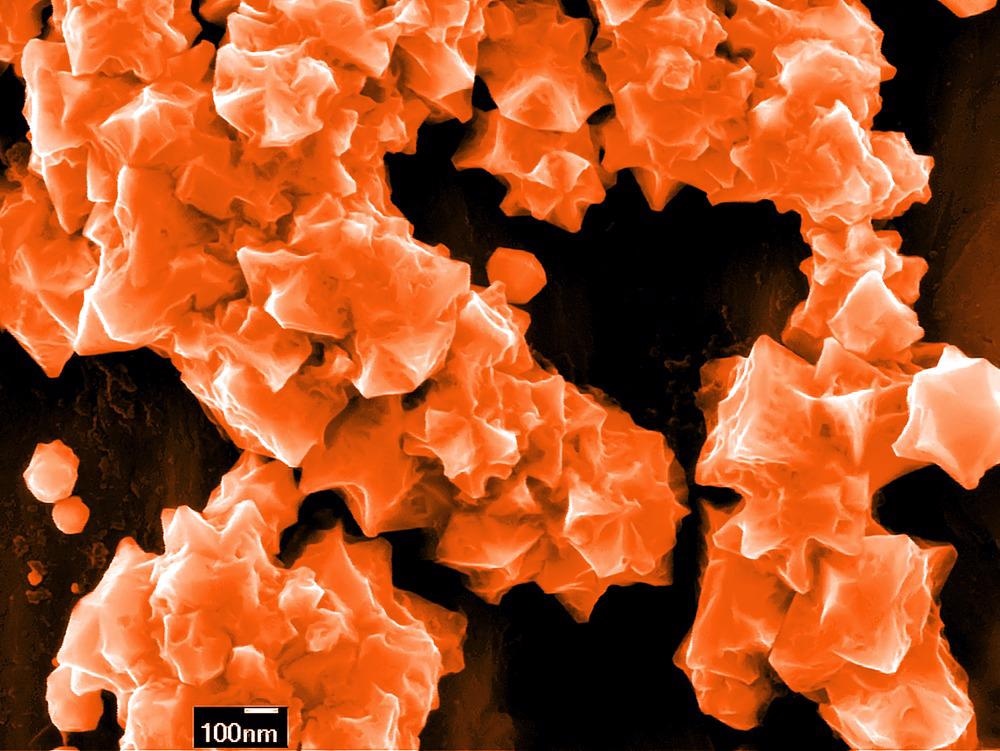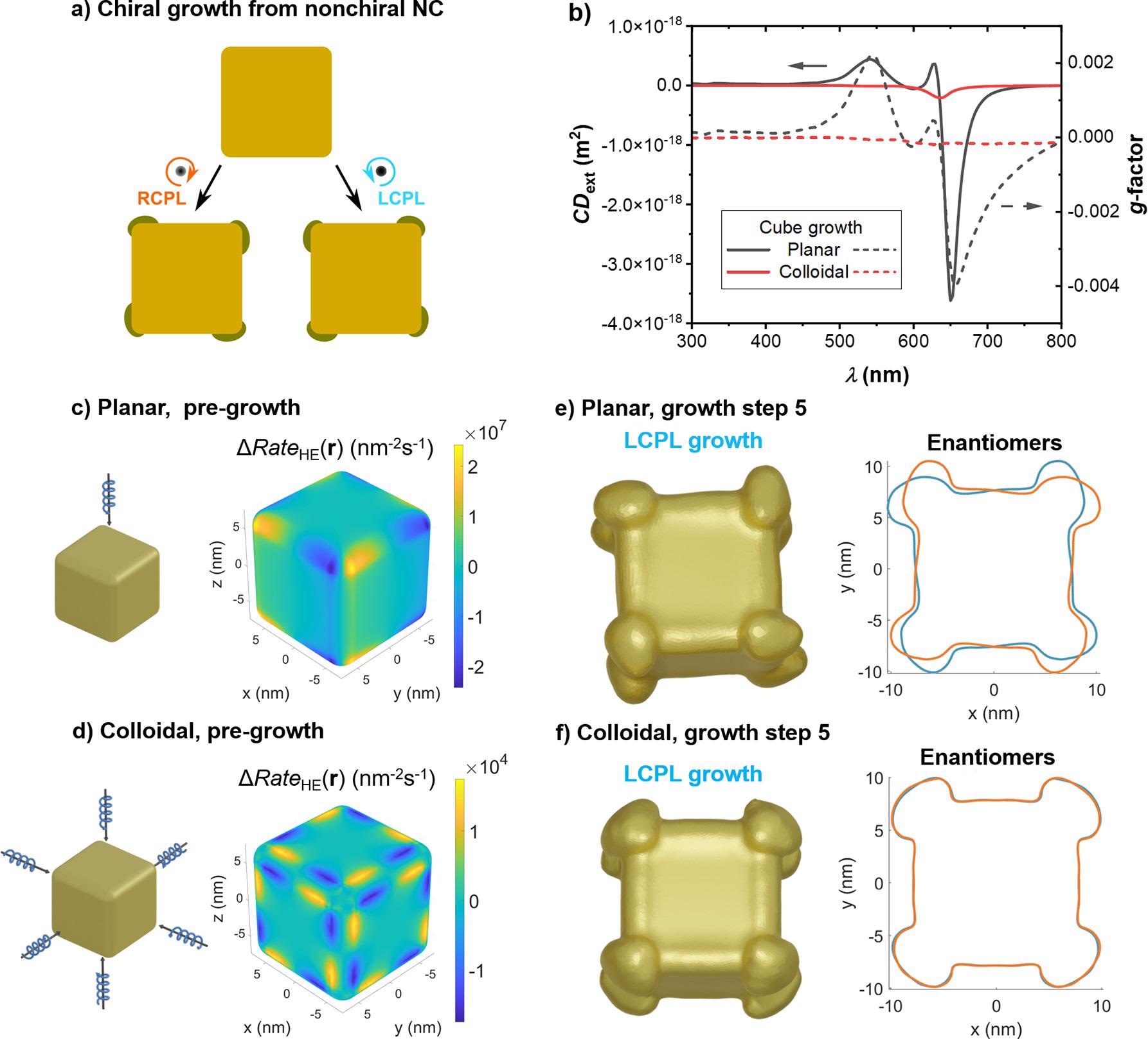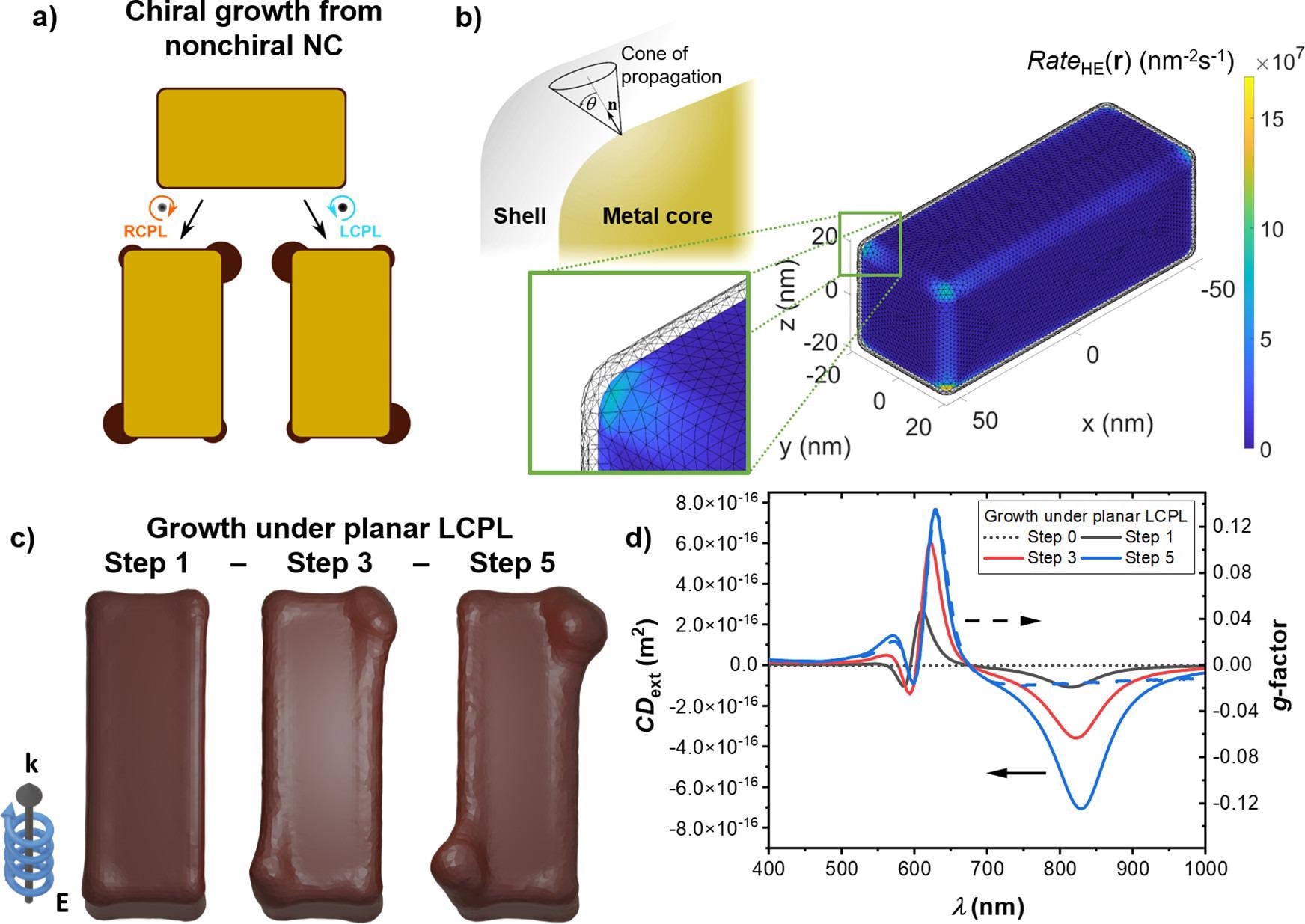Research on the potential of generating chiral plasmonic nanocrystals from several kinds of rigorously nonchiral seeds utilizing polarized radiation as the chirality-inducing method has been published in the journal Nano Letters.

Study: Local Growth Mediated by Plasmonic Hot Carriers Chirality from Achiral Nanocrystals Using Circularly Polarized Light. Image Credit: Georgy Shafeev/Shutterstock.com
The study introduces a unique theoretical framework for simulating authentic nonlinear and nonuniform photo growth phenomena in plasmonic nanocrystals, which are controlled by the stimulation of hot carriers, that can influence surface morphology.
Importance of Plasmonic Nanoparticles
Plasmonic nanoparticles enable synchronous vibrational modes of their conduction electrons in applying an external electromagnetic field.
The spectrum modification of plasmonic nanocrystals (NC), along with their specific bonding with light, has made them a widely utilized tool in optoelectronics, including their usage in augmenting and engaging with the chiroptical signature of molecules.
Plasmonic NCs and their blends are also effective in photocatalytic activity, acting as nano transmitters that focus light energy and transmit it to trigger biochemical reactions.

Scheme of the main steps in the computational growth algorithm. Once a given geometry is imported into the solver, we can obtain its spectral response and, importantly, calculate the maps of intraband hot carrier excitation that will inform the growth maps. Once we have these data for all relevant illumination conditions, we obtain the growth maps and deform the mesh of the NC following these data. At that point we have a new geometry that can be used to initiate a new iteration of the photogrowth cycle. Consequently, this photogrowth algorithm instantiates a nonlinear growth model in which the optical response of the NC changes as its surface grows, thus affecting the growth pattern in each subsequent step. Image Credit: Besteiro, L. V. et al.
Introduction to Chirality and Photoinduced Growth
Some of the activities that can be triggered by the stimulation of photonic hot carriers have the potential to modify the plasmonic NC itself. These include metal ion agglomeration formation, photo etching contraction, and the development of deposition of other substances on its surface.
It is worth mentioning, however, that carrier-mediated development can occur with homogenous topologies, particularly when bulk-type interband transfers are involved.
Inhomogeneous growth can also be caused by varying response probabilities at various places.

(a) Schematic diagram for the chiral growth from a nonchiral Au cube, with the polarization of light controlling the chirality of the final structure. (b) Comparison of the chiral signal of a Au cube grown under planar and colloidal conditions, after five growth steps. The solid lines represent the circular dichroism of their extinction cross sections, while the dashed lines are their dissymmetry factors, or g-factors. (c, d) Diagrams of the planar (colloidal) illumination conditions and maps of the differential rate of HE excitation under both polarizations of CPL. (e, f) Mesh geometries of the cube after five steps of growth under left circularly polarized light (LCPL) for planar and colloidal conditions, next to a comparison with its enantiomer using a cross section of both geometries at a z plane cutting them 7 nm above their centers.Image Credit: Besteiro, L. V. et al.
Importance of Seed Geometry in Chiral Growth
The novel research studied the response of several Gold nonchiral geometries to the planar lighting environments. Aspherical topology, a triangular prism with three equal ends, a prism, a rectangular prism, and a triangular prism with a longer side were among the geometries studied.
The inclusion of corners and edges created intense hot spots and violated the absolute axis of symmetry of the circular NC. The coupling of the topology and an encroaching beam of CPL retains an axis of symmetry.
Future modifications in shape should therefore be rotationally symmetric as well; hence a pristine spherical shape does not give acceptable beginning circumstances to trigger chiral growth.
Chiral Growth of Hybrid Nanocrystals
The researchers considered a rectangular prism for the growth of chiral shape. The formation of an insulating coating on the surface of the metals was thought to be the HE-mediated growth process.
CPL development resulted in considerably chiral NCs, and the numerical model illustrated how the visual mechanism might lead to the culminating symmetrical morphologies observed experimentally from nonchiral nanoparticles.

Chiral photogrowth of a Au@PbO2 rectangular prism. (a) Diagram depicting the chiral growth process (light moving into the page). In this case only the surrounding PbO2 layer is modified, and the Au rectangular prism keeps its shape. Our model begins with a thin (1 nm) nonchiral layer of PbO2 covering the metal, modeled as a dielectric with a refractive index of n = 2.3. (69) (b) Model of the Au@PbO2 system, showcasing the RateHE(r) at the interface of the two materials under λ = 550 nm illumination. The outer mesh corresponds to the outer surface of the PbO2 layer. The inset diagram depicts the cone, with an opening angle of 2θ = 120°, that propagates from each point at the Au NC’s surface the contribution from carriers excited at the metal–semiconductor interface toward the growth rates of the PbO2 area inside the projected cone. (c) Models of the Au@PbO2 prism after one, three, and five growth steps under LCPL with λ = 550 nm, under planar illumination conditions. The models are seen from below (light moving out of the paper), to highlight the pattern developed on this side of the NC. (d) Extinction circular dichroism (solid and dotted lines) and g-factor (dashed curve) of the prism at different growth stages. Image Credit: Besteiro, L. V. et al.
Challenges and Future Perspective
Due to the aggregating impact of the different orientations of the NC regarding the beam of illumination, it has been established that the development of chiral NCs with CPL in solutions is essentially hard for both small and large NC sizes.
This indicates that further research is needed to obtain considerably chiral forms using this chiral photo growth.
Utilizing NC seeds with particular discrepancies, exterior anisotropies, alternative entities of lattice degeneration such as nanoparticles interaction, or even methodologies that accelerate up the development response comparative to the arbitrary shifting of the NCs are all possible future pathways for expanding chiral photo growth in nanoparticles circumstances.
In a broader sense, the findings highlighted the promise of this unique approach to investigating and forecasting nanoparticle photo growth and photocatalysis, which could easily be adapted to include a range of physical mechanisms as the motivating factor.
As a result, this computational modeling technique may anticipate and compare reconfiguration caused by other underlying physics or activities other than expansion, such as scorching and engraving.
In short, the nonuniform development of nanoparticles as controlled by the localized stimulation of highly energetic electron injection under optical stimulation has been demonstrated using a unique computational technique.
Interview: Developing a Universal Route to Controlled Nanocrystal Synthesis.
Reference
Besteiro, L. V. et al., (2021) Local Growth Mediated by Plasmonic Hot Carriers: Chirality from Achiral Nanocrystals Using Circularly Polarized Light. Nano Letters. Available at: https://pubs.acs.org/doi/full/10.1021/acs.nanolett.1c03503
Disclaimer: The views expressed here are those of the author expressed in their private capacity and do not necessarily represent the views of AZoM.com Limited T/A AZoNetwork the owner and operator of this website. This disclaimer forms part of the Terms and conditions of use of this website.